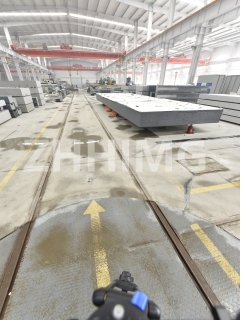Granite is widely used as a material for precisely machined components in a variety of industries, particularly for precision linear spines where stability and accuracy are critical. Let's take a closer look at why granite is a favorite material for precision linear spines.
Granite, which is a type of igneous rock made primarily of quartz, feldspar, and mica, has unique properties that make it an ideal material for precision linear spines. Firstly, granite has exceptional hardness, and it is almost scratch-resistant. It's impervious to wear and tear, which makes it fantastic for applications that demand rigorous and prolonged use.
Secondly, granite exhibits excellent dimensional stability, which means it's incredibly resistant to temperature changes and distortion due to moisture. It also has minimal thermal expansion and contraction, making it a perfect option for applications that require temperature stability.
Thirdly, granite's remarkable rigidity and stiffness are highly desirable characteristics for precision linear spines' fabrication. It has an extremely low coefficient of thermal expansion, making it an extraordinary material to use for precision components that require high precision, stability, and accuracy.
Fourthly, granite's exceptional vibration dampening properties are ideal for applications that demand high damping capabilities to minimize noise and vibration. It is a vital factor in precision linear spines since vibrations can disrupt the accuracy of the movement and cause unwanted effects.
Lastly, granite is resistant to most acids, alkalis, and chemicals, making it an excellent option for applications that involve exposure to acidic or alkaline environments.
In conclusion, granite is an excellent material for precision linear spines due to its exceptional hardness, dimensional stability, rigidity, vibration dampening properties, and corrosion resistance. With these properties, granite ensures that precision components remain stable and durable, enabling optimal accuracy, and minimizing any distortions or vibrations that may cause inaccuracies.
Post time: Feb-22-2024

